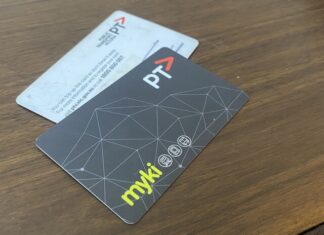Greg Wane
When Point Lonsdale’s Hugh Thompson called into Geelong scrap metal dealer Albert Batty’s office one afternoon in 1961, he spotted an old Ford field ambulance parked in the back corner of the yard.
“He had six of them at his yard in Gertrude Street in West Geelong,” Hugh remembered.
“Albert was cutting the back off them and converting them into cranes.”
Hugh can’t remember how much he paid for the vehicle.
“Probably too much for those days but I really wanted to rescue the old ambulance to keep it in original condition.”
Last weekend, Hugh’s 1945 airforce field ambulance took part in Point Lonsdale’s Anzac Day parade.
Hugh used to take the vehicle to the Geelong march but the high fuel costs has forced him to run the thirsty vehicle closer to home.
Ford built the ambulance in Canada as a cab chassis.
Built for military use, the two-ton light trucks were optioned as tray trucks, cranes, canvas-covered troop carriers and hard-back field ambulances.
The field ambulance hard backs were built at Geelong’s Ford Motor Company during the Second World War.
Powered by a Ford side-valve, V8 petrol engine, the four-wheel-drive ambulances were used at air force bases around the world.
Hugh says he has great fondness for this type of vehicle.
“When I started work at 16 in 1951 with Geelong house removalists Colin Cameron and Son I drove a tray truck that had been converted from an old Ford ambulance,” he recalls.
“The old ambulances were really popular during the early ’50s because they had good, reliable engines and, having been parked at air bases, none had done very many miles.”
After the Second World War the old ambulances were converted to commercial use as tray trucks, vans and cranes during the building boom in Australia.
Hugh says the vehicle has a “crash-box” – a four-speed, non-synchromesh gear box – so to change gears smoothly the driver has to do a “double clutch” manoeuvre each time.
Hugh’s ambulance had done just 5000 miles when he became its owner.
It had been based at the Woomera Range during the post-war atomic bomb testing at the remote area of South Australia.
When Hugh joined Victorian Historical Military Vehicles Club he met a former member of the armed forces who was present at Woomera during the bomb testing.
The veteran claimed he could see Hugh’s old Ambulance “glowing” with radioactivity.
“I don’t believe that but it makes a good story, though,” Hugh says.
Every year on the long-weekend in March Hugh drives his ambulance to Corowa, in New South Wales, for an Amphibious and Historical Military Vehicle meeting.
“Last year we got 179 restored military vehicles from all around Australia.”
Hugh says the “beautifully built” Ford engine has needed little attention over the years.
Capable of delivering 95 brake-horsepower, the engine still runs well, although Hugh says the six-volt electrical system gives him trouble.
The vehicle has now been converted to a 12-volt system, which makes the “tight” engine easier to start.
The ambulance is still running on the original set of Olympic 10-50-16 tyres.
Hugh says his truck used to suffer from nasty “wheel wobble” on the front wheels, even at slow speeds.
“Driving long distances can be hard going but since I fitted shock absorbers horizontally along the front axle the wheel wobble has almost disappeared and now it drives nice and smooth.”
In hot weather the ambulance can heat up inside, especially when sitting in open at airfields, so a series of vents were built into the rear doors as well.
Hugh enjoys even more ventilation thanks to a front windscreen design that lets the glass angld outward to let a breeze run through the cabin.
A small open window between the cab and the rear section was all the air ventilation that flowed through to patients on stretchers in the back.
Hugh says the driver sits right next to the engine, so the cab can heat up quickly.
In 1988 he was invited to bring his old ambulance toe Richmond Air Base for the 1988 Bi-centennial celebrations.
“I repainted it in the original airforce colour before we went to Richmond but that’s all the major restoration I’ve needed to do, except for the usual running maintenance.
“These days, though, with petrol costs I’m getting about 15 miles to the gallon, so I only run it on special occasions”.
Get the latest news to your email inbox FREE!
REGISTER





